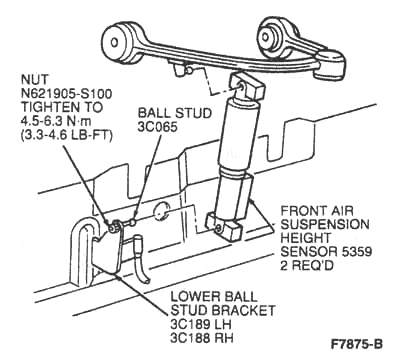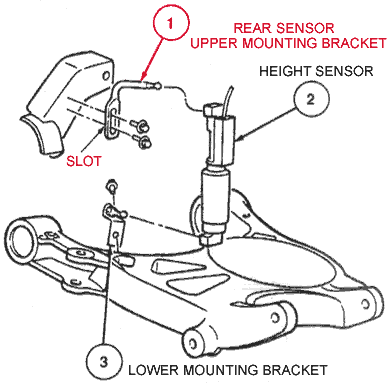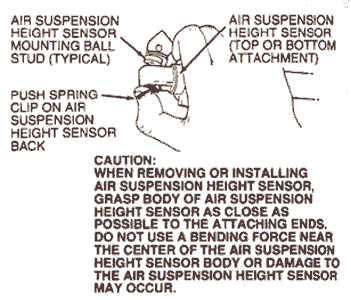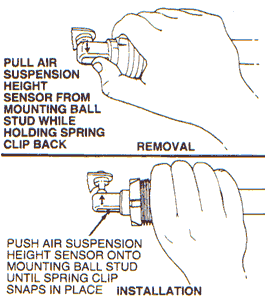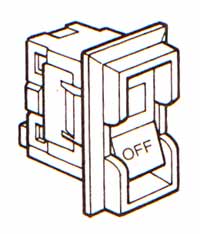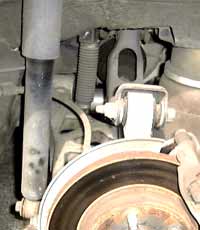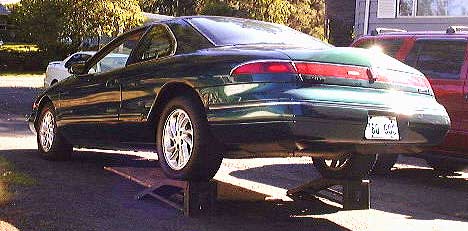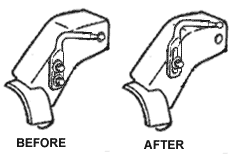 |
||||||||||||||||||
        |
||||||||||||||||||
|
Sensor Lowering
There are THREE height sensors on the Mark VIII, two up front and on located on the drivers side rear (see pics). The basic concept behind this modification is to compress the front sensors and extend the rear. To explain why this is the case, I have included these pictures:
Imagine what would happen if you were to raise the frame of the vehicle, or if the wheel attached to the suspension arm were to move downward. Vehicle height would raise and the sensors would compress. This would cause the car to think it was high and therefore vent air from the bags making the car sit lower. The reason the rear is different is because it is a different sensor. When I designed a modified height sensor system, I noticed that the front sensors needed additional voltage to cause a bleed signal while the rear needed a reduction in voltage. They work differently. FRONT WARNING: Performing this modification could emphasize existing defects of the bag and cause one or more bags to leak.
1) Turn air-ride switch OFF, loosen lugnuts, place vehicle on jack stands and remove both front wheels.
2) Locate the mounting bracket and dislodge the sensor from it's mounting stud. There is a small metal tab that must be pulled, which allows you to dislodge the ball from its mount. Measure the amount of travel required to compress it completely and make a note. You can simply eyeball it if you wish.
3) Drill a hole in the bracket directly below the top mounting bolt. This hole should measure the same distance that was required for the sensor to compress. You can do this while the bracket is attached to the vehicle. NOTE: You are drilling a hole through the bracket only, not through the bracket and into the vehicle. Also, make sure the bolt will fit through the hole that you drilled.
4) Loosen the bracket and reattach it by placing one of the bolts through the hole that you just drilled, and into the top mounting hole in the vehicle. You have essentially moved the bracket up.
5) By turning the bracket left or right, you have a small amount of adjustment to make up for any miscalculations.
6) That's it. Let the car down, turn the air-ride switch ON, start the car and let it level, then turn the car off to see the results. It should drop down approx. another 1" or so, depending on where your sensor was located to start with. It could be as much as 2.5"-3.0" inches on some vehicles.
REAR
For questions or comments about this modification, send me an email.
Kale Kainoa
|
||||||||||||||||||

![]()
All photos, unless noted, copyright Lincoln Motor Company. Reproduction by any means other than for personal use is strictly prohibited.
Permission to use material on this site can be obtained by contacting the webmasters.
Website Designed by Vistitude Computer Solutions, Inc

